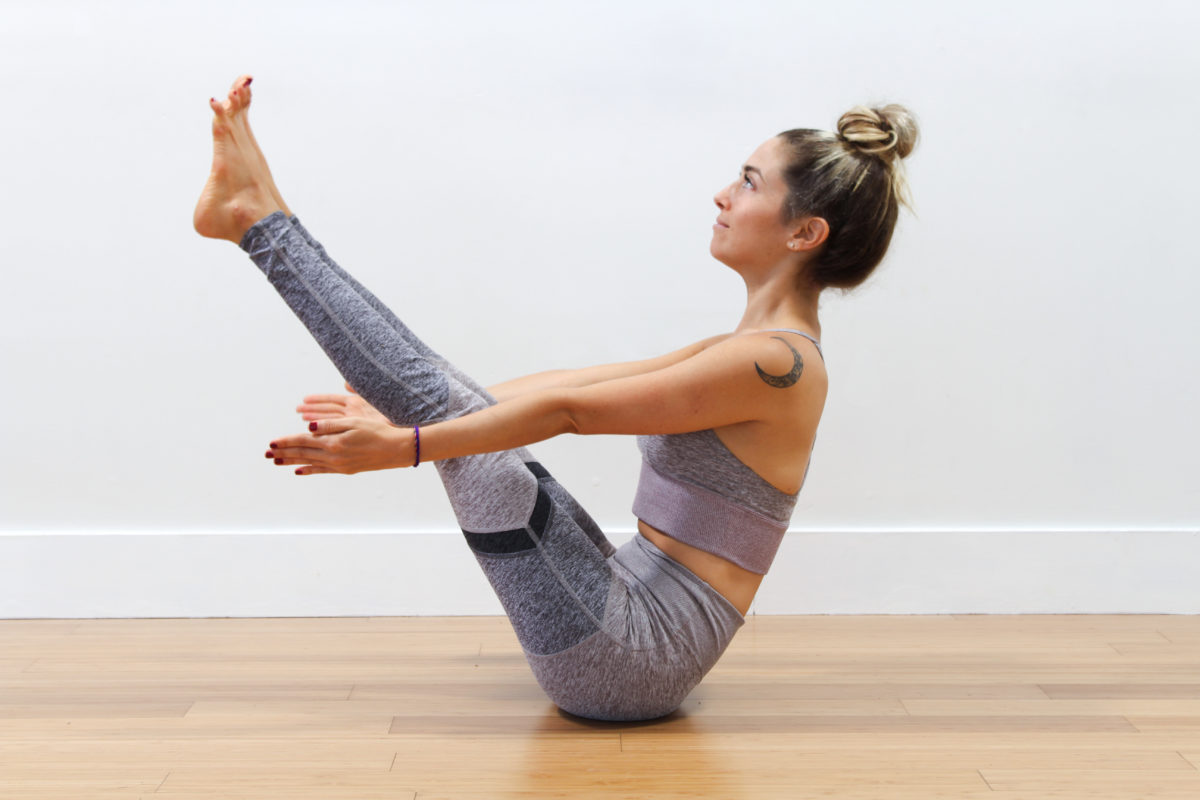Navasana (Boat Pose): A Complete Guide
Navasana, or Boat Pose, is a powerful yoga asana that strengthens the core, improves balance, and enhances mental focus. Its name comes from the Sanskrit words nava (boat) and asana (pose), as the body resembles a boat floating on water. This pose is a key component of Hatha, Ashtanga, and Vinyasa yoga due to its ability to engage multiple muscle groups while promoting stability and concentration.

Technique: How to Perform Navasana Correctly
Proper alignment is essential to avoid strain and maximize the benefits of Navasana. The pose can be practiced in stages, allowing beginners to build strength before attempting the full expression.
Step-by-Step Instructions
Starting Position: Sit on the mat with legs extended straight in front (Dandasana). Place hands slightly behind the hips, fingers pointing toward the feet. Engage the core and lengthen the spine.
Lean Back & Lift Legs: On an exhale, lean back slightly while lifting the legs off the ground. Beginners can keep knees bent (Half Boat Pose), while advanced practitioners straighten the legs at a 45-degree angle.
Balance on Sit Bones: Shift weight onto the sit bones (ischial tuberosities) rather than the tailbone to avoid compression. The torso and legs should form a "V" shape.
Arm Position: Extend arms forward, parallel to the ground, palms facing each other. Alternatively, hold the backs of the thighs for support.
Engage the Core: Draw the lower abdomen inward to activate the deep core muscles (transverse abdominis). Avoid rounding the back excessively.
Breath & Gaze: Maintain steady ujjayi breathing and focus the gaze (drishti) toward the toes or forward to aid balance.
Hold & Release: Sustain the pose for 5–10 breaths, then lower legs and torso with control.
Common Mistakes & Corrections
Collapsing the Chest: Keep the sternum lifted and shoulders relaxed.
Holding the Breath: Maintain smooth, deep breaths to oxygenate muscles.
Overstraining the Neck: Keep the neck neutral; avoid jutting the chin forward.
Rounding the Lower Back: Engage the core to prevent excessive curvature.
Benefits of Navasana
Navasana offers numerous physical, mental, and energetic benefits, making it a holistic practice for yogis of all levels.
Physical Benefits
Strengthens Core Muscles: Engages the rectus abdominis, obliques, and transverse abdominis.
Improves Digestion: Massages abdominal organs, aiding digestion and detoxification.
Enhances Balance & Posture: Develops proprioception and spinal stability.
Strengthens Hip Flexors & Quadriceps: Supports mobility in forward bends and backbends.
Reduces Lower Back Pain: Builds endurance in the erector spinae muscles when practiced correctly.
Mental & Energetic Benefits
Boosts Concentration (Dharana): Requires intense focus, training the mind to stay present.
Builds Willpower (Tapas): Cultivates discipline and mental resilience.
Activates Manipura Chakra: Stimulates the solar plexus, enhancing confidence and personal power.
Philosophy Behind Navasana
In yoga philosophy, asanas are more than physical exercises—they are tools for self-awareness. Navasana symbolizes the journey of navigating life’s challenges with steadiness and determination. The boat metaphor represents the body as a vessel for the soul, requiring balance (sthira) and ease (sukha) to stay afloat.
The pose also embodies abhyasa (consistent practice) and vairagya (non-attachment), as one must engage the core without straining. The challenge of maintaining Navasana mirrors life’s fluctuations—when the "boat" wobbles, the practitioner learns to recenter with breath and focus.
Variations of Navasana
To accommodate different levels of strength and flexibility, Navasana can be modified or intensified.
Beginner Variations
Half Boat Pose (Ardha Navasana): Knees bent, shins parallel to the floor.
Supported Boat Pose: Hands hold the backs of the thighs for stability.
Strap Assistance: A yoga strap looped around the feet helps maintain leg elevation.
Advanced Variations
Full Boat Pose (Paripurna Navasana): Legs fully extended at a 45-degree angle.
Low Boat Pose (Ardha Navasana): Torso and legs hover just above the ground.
Dynamic Boat Pose: Alternating between lifting and lowering legs ("boat crunches").
Twisting Boat Pose (Parivrtta Navasana): Adding a spinal twist by bringing elbow to opposite knee.
Building Core Strength for Navasana
A strong core is essential for mastering Navasana. Supplementary exercises and yoga poses can help develop the necessary strength.
Preparatory Poses
Plank Pose (Phalakasana): Builds endurance in the abdominals and shoulders.
Supine Leg Lifts (Uttanpadasana): Strengthens lower abdominals and hip flexors.
Bridge Pose (Setu Bandhasana): Engages glutes and lower back for spinal support.
Breath & Bandha Integration
Uddiyana Bandha: Engaging the abdominal lock during exhalation enhances core activation.
Mula Bandha: The root lock stabilizes the pelvis, aiding balance.
Progressive Training Tips
Start with short holds (10–15 seconds), gradually increasing duration.
Incorporate dynamic movements, such as transitioning between Boat and Low Boat Pose.
Use props (blocks or straps) to refine alignment before attempting advanced variations.
Conclusion
Navasana is a transformative asana that strengthens the body, sharpens the mind, and aligns with yogic philosophy. Whether practiced as a static hold or integrated into a dynamic sequence, it cultivates resilience, focus, and inner stability. By honoring individual limitations and progressing mindfully, practitioners can harness the full potential of Boat Pose—navigating the waters of yoga with grace and strength.
Through consistent practice, Navasana becomes more than a physical challenge; it evolves into a meditation on balance, endurance, and the harmonious union of effort and surrender.
0 Comment to "Navasana Yoga (Boat Pose): Technique, Benefits, Philosophy, Variations, and Building Core Strength"
Post a Comment